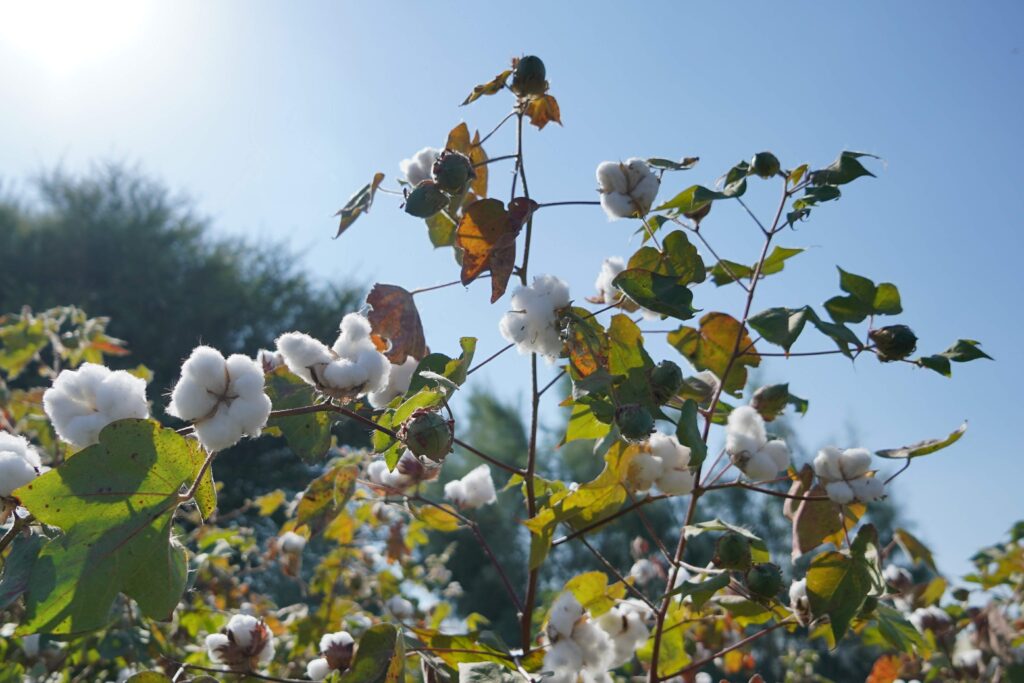At OCA we see organic cotton as a cornerstone of a truly circular textile system, one that regenerates nature, reduces dependence on fossil-based materials, and strengthens livelihoods across farming communities.
As the European Commission prepares the Circular Economy Act, OCA welcomes this important step toward accelerating Europe’s transition to circularity.
In our feedback, submitted earlier this week, we encourage the Commission to recognise the essential role of sustainably sourced renewable materials, such as organic cotton, in advancing circularity in the textile sector, to maintain a high level of ambition on sustainability while ensuring coherence with existing legislative initiatives.
The role of organic cotton in advancing circularity
The textile industry remains one of the most resource and emission-intensive sectors globally. Emissions are generated at multiple stages of the value chain, from synthetic fertilisers and pesticides in fibre cultivation to land-use change energy-intensive processing and heavy reliance on fossil fuels in material production.
Today 21% of the textile –related emissions come from raw materials extraction and 88% of global fibres are still fossil-based.
This reality highlights a key challenge: recycling alone cannot deliver a circular textile sector. Current recycling capacity and technology are not yet able meet global fibre demand, and many recycled textiles still rely on virgin fossil inputs.
Organic cotton contributes to circularity by:
- Regenerating soil health and biodiversity
- Eliminating synthetic fertilisers and pesticides
- Reducing reliance on fossil-based fibres
- Supporting smallholder farmer livelihoods and rural resilience
The EU’s Eco-design for Sustainable Products Regulation (ESPR) introduced the concept of ”sustainable renewable materials”, recognising that circularity also relies on natural systems and responsible primary production. While still undefined in law, this concept is gaining momentum across policy and industry, and the Circular Economy Act should build on it. A genuine circular economy doesn’t only reuse and recycle resources, it also ensures that the fibres entering the system are sustainable, and regenerative from the start.
OCA’s recommendations to the European Commission
In our submission, we invite the Commission to:
• Broaden the scope of the Circular Economy Act beyond secondary raw material. Circularity should include sustainably sourced renewable fibres, not only recycled inputs.
• Promote the use of sustainably sourced renewable materials, including organic cotton. Recognise their contribution to circularity and introduce targeted support for its integration across the textile value chains.
• Ensure a just transition for primary producers, particularly smallholders. Protect rural livelihoods and ensure a just and inclusive transition to a circular economy within the EU and globally.
Recycled materials are a key part of the solution, but sustainably sourced renewable materials like organic cotton are equally important in achieving true resource efficiency and circularity. A balanced approach will help Europe reach its climate, biodiversity, and competitiveness goals, while aligning with initiatives such as the ESPR and the upcoming EU Bioeconomy Strategy.
OCA will continue to bring on-the-ground evidence and practical insight into how policy can drive both circularity and social impact.
Further reading
Full recommendations
OCA’s position on the ESPR
OCA’s contribution to the upcoming EU Bioeconomy Strategy


